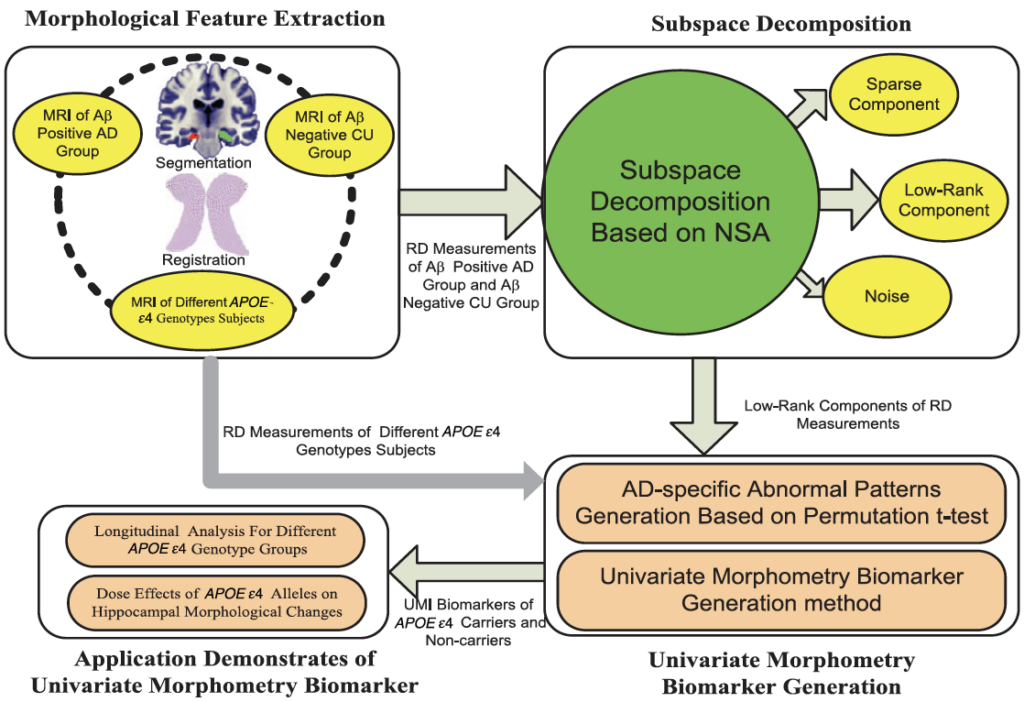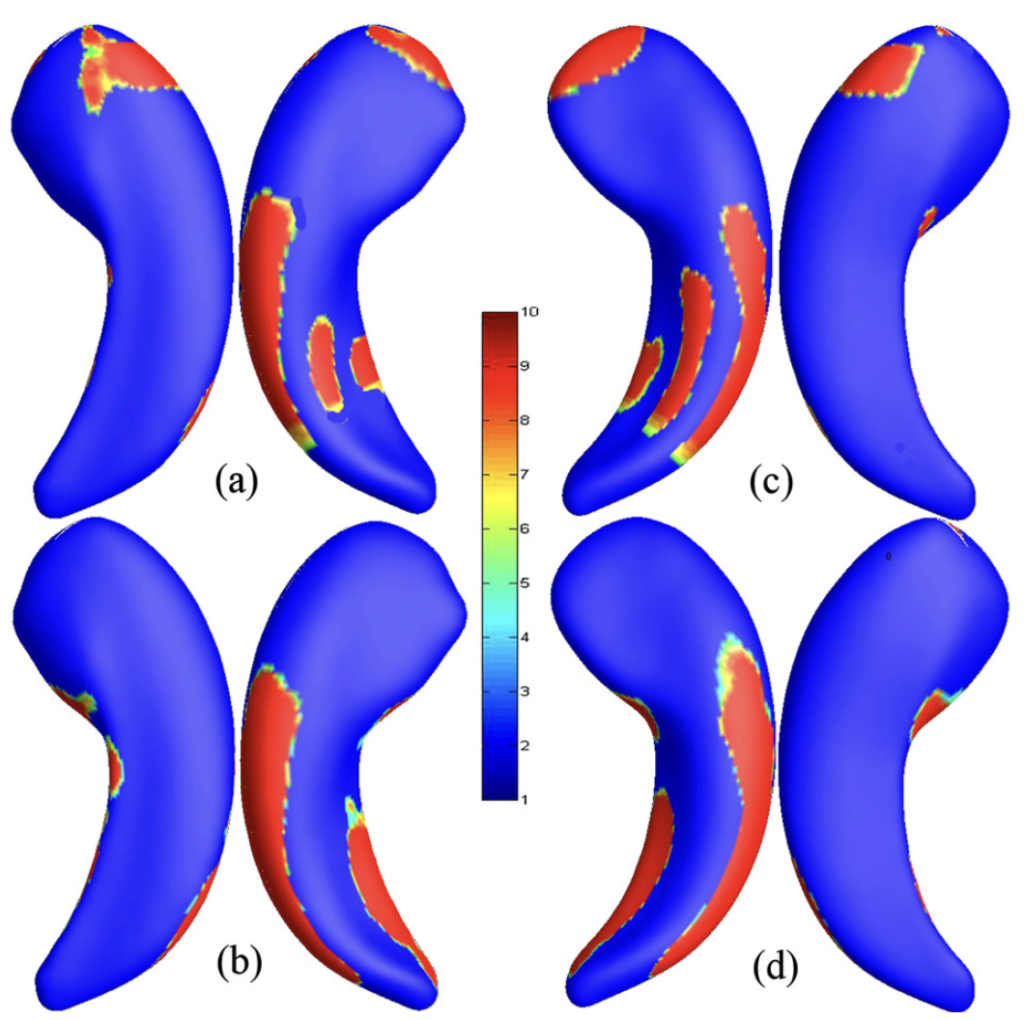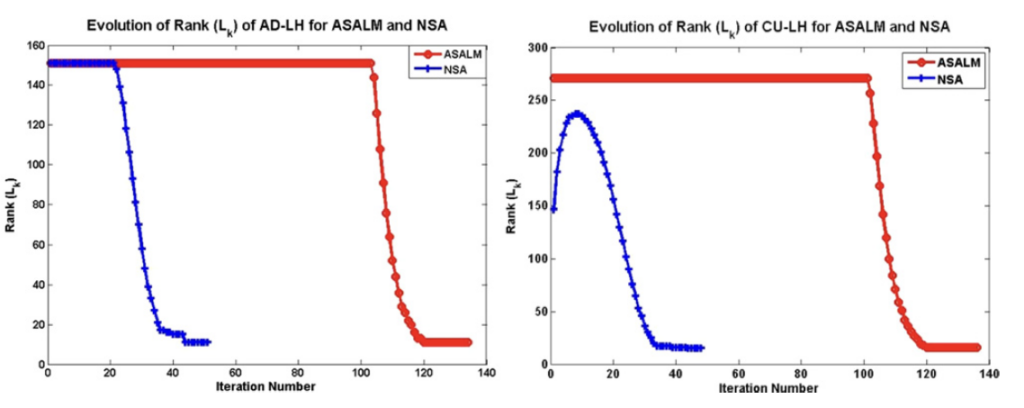Studying APOE ε4 Allele Dose Effects with a Univariate Morphometry Biomarker
Wang G*, Zhou W, Kong D, Qu Z, Ba M, Hao J, Yao T, Dong Q, Su Y, Reiman EM, Caselli RJ, Chen K, Wang Y*
Abstract
Background: A univariate neurodegeneration biomarker (UNB) based on MRI with strong statistical discrimination power would be highly desirable for studying hippocampal surface morphological changes associated with APOE 4 genetic risk for AD in the cognitively unimpaired (CU) population. However, existing UNB work either fails to model large group variances or does not capture AD induced changes.
Objective: We proposed a subspace decomposition method capable of exploiting a UNB to represent the hippocampal morphological changes related to the APOE 4 dose effects among the longitudinal APOE ε4 homozygotes (HM, N= 30), heterozygotes (HT, N= 49) and non-carriers (NC, N= 61).
Methods: Rank minimization mechanism combined with sparse constraint considering the local continuity of the hippocampal atrophy regions is used to extract group common structures. Based on the group common structures of amyloid- (A ) positive AD patients and A negative CU subjects, we identified the regions-of-interest (ROI), which reflect significant morphometry changes caused by the AD development. Then univariate morphometry index (UMI) is constructed from these ROIs.
Results: The proposed UMI demonstrates a more substantial statistical discrimination power to distinguish the longitudinal groups with different APOE 4 genotypes than the hippocampal volume measurements. And different APOE ε4 allele load affects the shrinkage rate of the hippocampus, i.e., HM genotype will cause the largest atrophy rate, followed by HT, and the smallest is NC.
Conclusion: The UMIs may capture the APOE ε4 risk allele-induced brain morphometry abnormalities and reveal the dose effects of APOE ε4 on the hippocampal morphology in cognitively normal individuals.


